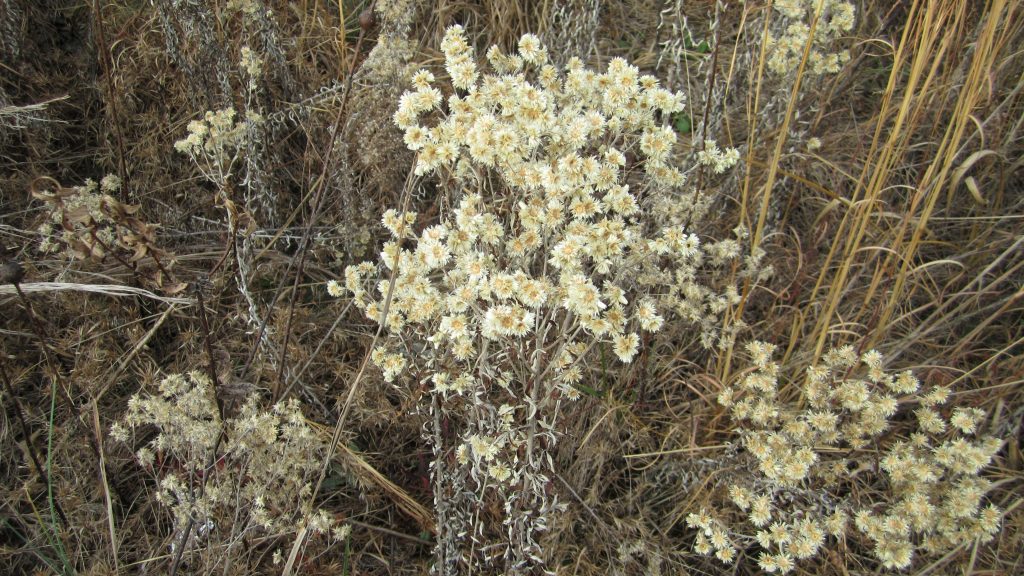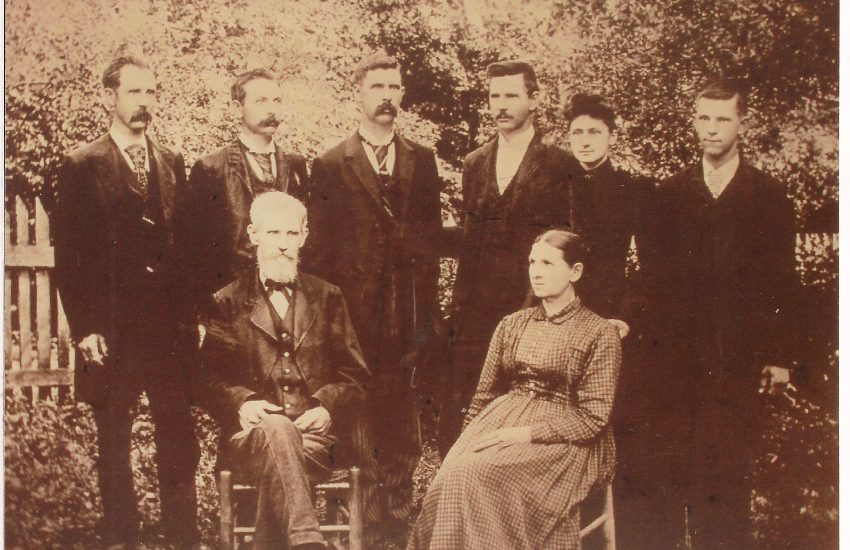Smoking Rabbit Tobacco
Most kids who grew during the 40s and 50s, especially those who lived out in the country, probably know all about smoking something called rabbit tobacco. More than likely, rabbit tobacco was smoked long before anyone who tried it back then got their hands on an actual cigarette. I’ve heard about rabbit tobacco most of my life, but I never saw it growing until just last week when my husband and I were out in search of a Christmas tree. And I must say, it didn’t look a thing like I had it pictured. After bringing some of the dried plants home, along with our Christmas tree, I was curious about how it got its name, so I turned to the internet for some answers. You might be like my husband
… surprised to learn some interesting facts about this plant that is actually an herb. Here are some things I discovered:
Rabbit tobacco, whose proper name is gnaphalium obtusifolium, is an herb in the daisy family. It contains no nicotine, and is a great host plant for the Painted Lady butterfly. It grows as far west as Texas and Minnesota, and as far south as Florida. Other names it is known by include life everlasting, sweet balsam, white balsam, sweet cudweed, cat’s foot, fragrant everlasting, and Indian posy. Preferred habitat is thin woods, pine woods, old fields, stable dunes and roadsides.
In Colonial America, pillows were stuffed with rabbit tobacco for its delicate and soothing aroma. The pillows were especially used for consumptive patients. Rabbit tobacco was a popular smoke among European peasants. Wildflowers of the Southeast United States says that the plant is slightly aromatic and has a distinctive color and form. Even in the dead of winter, it is easy to spot. Harvested while still fresh, the flowers will remain intact for a long time. There are many accounts of rabbit tobacco being smoked in place of tobacco by Native Americans and settlers alike. The smoke held a spiritual or mystic power for many Indians. The Cheyenne dropped the leaves on hot coals and used the smoke to purify gifts to the Spirts. Cheyenne warriors chewed the leaves and rubbed their bodies with it to strengthen and protect themselves in battle. The Menominee Indian tribe used the smoke after a death to keep the ghost of the dead from bringing nightmares and bad luck to the surviving family members. The Potawatomi Indians and the Chippewa Indians use the smoke to drive away evil spirits from their dwellings. The Cherokees Indians used it in sweat baths. It was also thought by many tribes that the smoke had a restorative power that could revive the unconscious or paralyzed. Rabbit tobacco is commonly thought to be a sedative, a diuretic, and a very mild pain reliever. Both the smoke and a leaf tea have been used to treat various throat and bronchial conditions from colds to asthma and is especially used for coughs. When made into a poultice, it can be used on sores on the skin and in the mouth, and it has been highly recommended for treating bruises and burns.
A Cherokee Indian tale tells how a rabbit was trapped by some underbrush and while trying to escape, he was cut. The rabbit discovered the herb was able to cure cuts, and as a result, the name incorporates the term “rabbit.” Because rabbits were often seen near or around this plant, it was assumed they must use it as a means of getting into touch with their Creator. It is believed that this is how the plant became established for use in Indian medications and in Indian religious ceremonies involving communicating with the spirits.
Not only did I get an education about rabbit tobacco while researching information for this story, but I had a lot of fun with it too. I thought it would be interesting to do my own type of survey to see how many people I could find that knew something about rabbit tobacco. Surprisingly, not one person I talked to that was born in the late 1960s or later even knew what rabbit tobacco was. Part of my survey included showing a plant which many identified right away, but it was always someone who had grown up out in the country that knew what it was. Many people I asked had no idea what it was, and in fact, one fellow I talked to who moved to this area from Massachusetts jokingly told me, no, he didn’t know what the plant was because he’d never seen a rabbit smoking tobacco.
Probably the one answer I got from a lady whose name will not be revealed in this story surprised everyone who knows her by telling me not only did she know what the plant was, she indeed had smoked it as a youngster, but that wasn’t all she had experimented with while growing up. Crossvine, grapevine, corn silks, and last but not least, coffee grounds had also been tried. A long standing male friend who takes her out to eat, goes on trips with her, and often cares for her dog while she’s away announced to everyone that he might have to reconsider his opinion of her now that her shady past had been revealed. Many others who were present at this particular time agreed that they too had also tried crossvine, grapevine, and corn silks, but coffee grounds rated low in the survey.
Upon asking Butch Holman about rabbit tobacco, he replied that he had smoked it when he was about 10 years old, but was caught by his mother who gave him a good spanking over it.
Another one of the questions in my survey had to do with the kind of paper used to smoke rabbit tobacco. The one answer that I got most often was a brown paper bag. Only once did someone tell me cigarette papers were used.

Going on the hunt of a Christmas tree has usually always been an adventure, but this years’ trip turned out to have an added bonus in that I now consider myself quite masterful in spotting rabbit tobacco growing along the roadsides. In fact, one of the places I recently found it growing in rather large numbers was near the parking lot of a local store here in Livingston. And after this years’ very educational and fun discovery was made while in search of a Christmas tree, it will be interesting to see if next years’ trip can top it.

